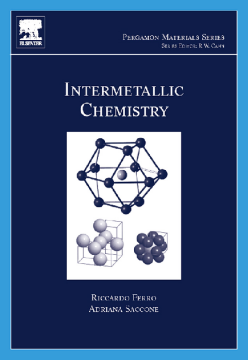
Additional Information
Book Details
Abstract
Intermetallic science is closely related to physics, chemistry, metallurgy, materials science & technology, and engineering. This book emphasizes the chemical aspects of this science, and therefore the mutual reactivity of metals and the characteristics of intermetallic compounds. Topics included are:
• Phase diagrams of alloy systems. Many intermetallic systems form several compounds, generally not obeying common simple stoichiometric rules, which are often homogeneous in a certain range of compositions. The stability and extension of these phases are conveniently presented through phase diagrams.
• Selected aspects of intermetallics structural chemistry, with emphasis on the solid state. The general structural characteristics of intermetallic phases are considered, with attention to nomenclature and to alternative and complementary methods of presenting crystal-chemical data. A brief account is given of derivative and degenerate structures, modular aspects of crystal structures, and of a few special groups of alloys such as quasicrystals and amorphous alloys. A number of selected structural prototypes with typical features, their possible grouping in structural “families and their distribution among different types of alloys are provided.
• Intermetallic reactivity trends in the Periodic Table. Attention is given to a few selected elemental parameters such as electron configuration and valence electron number and to their changes along the Table, which act as reference factors of the intermetallic behaviour. As an example, the relationships are considered between crystal structure and the number of valence electrons per atom (or per formula) in various classes of compounds or solid solution phases.
• Alloying behaviour systematics of intermetallic systems with a description of the intermetallic reactivity of each element, or group of elements, in the order of their position in the Periodic Table. For each pair of metallic elements, their capability to form intermediate phases is summarised by maps and schemes.
• A description of small scale preparation methods of intermetallics. A number of interesting and significant peculiarities are, e.g., those related to their high melting points, insolubility in common solvents, etc.
· Systematic treatment of alloying behaviour
· Wide overview of intermetallic chemistry
· Illustrated, with many examples
